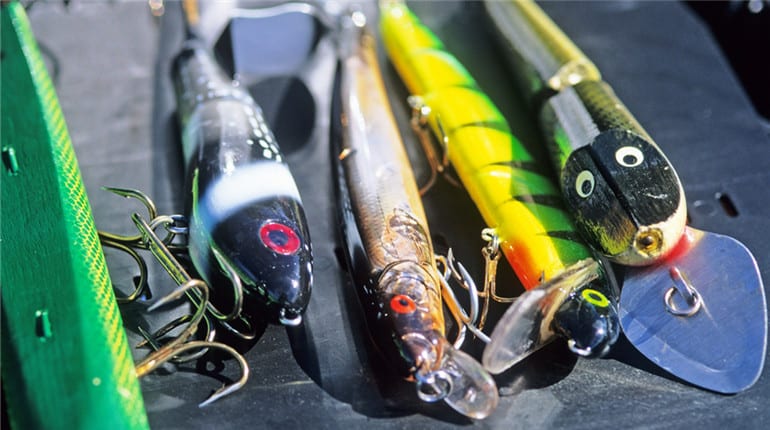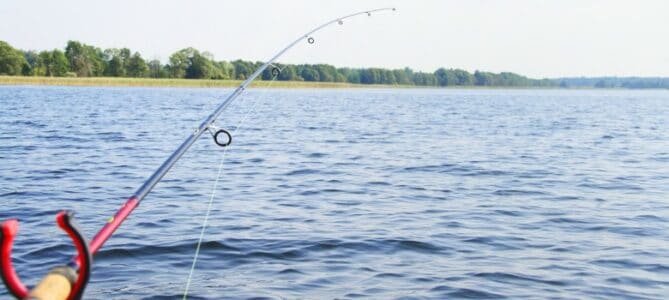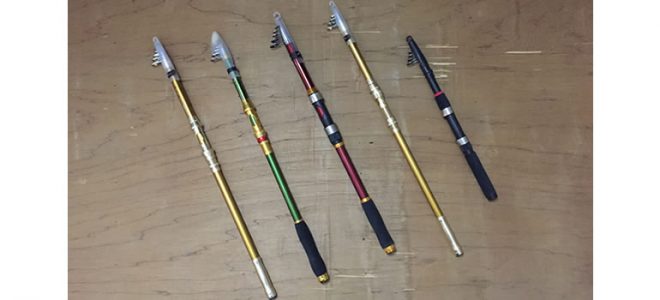If you buy via a link on this page, we may receive a commission, at no extra cost to you.Learn more
The right fishing lure is going to be what works for the type of fish and water where you like to catch. Every type of fish has different preferences for diet, which means that you will probably switch up your bait with each one.
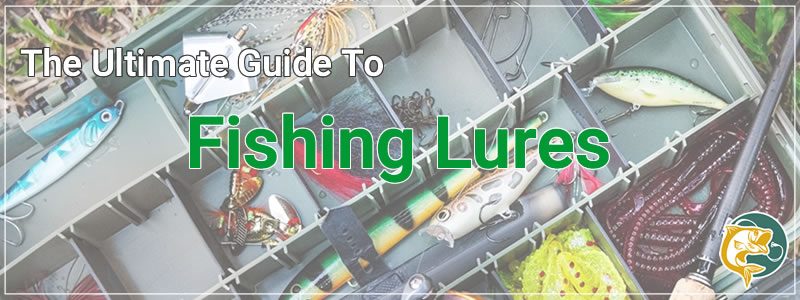
While the world of bait can be overwhelming if you just head to the store, you can use this guide to break down all types of fishing lures and baits, including the differences between hard and soft baits.
What is a Fishing Lure?
While natural bait like minnows and worms work well, artificial fishing baits and lures can be used more than once to catch multiple fish. Lures also come in a number of variations, but they are all designed to do the following:
- Attract fish with movement, reflections, and colors.
- Look like insects, larvae, smaller fish, and other creatures that fish love to feast on.
While most fishing lures can target a certain type of fish species or a group of fish, you can likely use the same lures for different fish. However, some will work better than others to attract particular fish, such as trout and panfish. These types of fish won’t do well with lures designed for pelagic fish. You can find the types of fish that lures are good for on the packaging. Most lure manufacturers list these on the side or back of the package.
When you pick a fishing lure, you should pay attention to size and weight, making sure to think about the water conditions where you’ll be fishing as well. If you are fishing in rivers with strong currents or windy conditions, then heavier lures are thought to be better. Lightweight lures are great for calm conditions.
In addition to size and weight, lure color and reflective features are also important. When you fish in murky or brackish water, bright lures, and reflections will attract a catch more successfully. However, the opposite is true for crystal-clear lakes and waterways. You wouldn’t want to use a colorful lure.
Lure Fishing vs Bait Fishing

A fishing lure is akin to hunting fish, whereas bait fishing, aka using baited hooks, works more like trapping. Lure fishers are able to span across larger expanses of water, seeking out their catches. There are different situations where lure fishing is better than bait fishing, and vice versa. Here are a few things to consider:
When Is It a Good Time to Use Lures?

Fishing lures work well for catching aggressive, predatory fish, but they will also work for catch and release better than baiting. If you don’t want to catch smaller, undersized, and other nuisance fish, then lures really are the best way to do so.
If you are fishing in clear water, fishing lures are going to be the best way to find the larger fish. Warmer water will also work better with fishing lures over baits, simply because bait may fall apart in warmer waters.
Lures use a uni knot primarily, which is a strong knot that cat forms a small loop. That can be used to attach to the line or fly lead. This allows the lure to swing freely and flow more naturally in the water, which is more attractive for fish.
There are some ways that baits are better than lures. For one, a good lure can be expensive. Some lures get caught on trees, water weeds, and rocks. You need to know how to cast and retrieve, as well as a troll from a moving boat, in order to get the most out of a lure.
Some species of fish just won’t respond to lures. They require the smell of bait in order to latch on.
When Is It A Good Time to Use Bait?

You should use bait at night, when instructing those new to fish, or when water is muddy and discolored. There are also times when it’s very cold that using bait is best. If you are targeting fish that are vegetarian or omnivorous, then baits also work best.
Fishermen tend to use bait with half-blood knots, you want to create a strong connection so that the fish will catch onto the line.
Bait is also effective at fooling most fish and faster at catching certain types of fish. It was also pretty cheap. You can cast out your line, set your rod down, and then the fish will come to you. You can also return leftover bait to the water or take it home to your freezer for use in the future.
Many fish will hook themselves when they latch onto the bait, so you don’t have to know exactly where the fish is to be able to catch the fish. Bait is also good to use with a variety of different fish in every kind of aquatic environment. You will always catch something with the right bait.
Bad Times to Use Bait
There are some issues with bait that will prevent you from using it always. For one, bait has to be refrigerated or you’ll need a live well to help you maintain the freshness of your baits. You might have to catch your own bait, which is difficult and dirty. Bait also smells pretty strongly. It will stain your hands, clothes, and gear, so you will always have to shower and clean your clothes rigorously.
Bait doesn’t always attract the best types of fish, so you may run through your best bait and only catch undersized fish or those that you don’t want.
However, probably the worst part is that if you are doing catch and release, you can’t release baited fish typically back into the water with a high rate of survival. That’s because baited hooks tend to get latched onto fish, which can’t be released.
Lure fishing VS Bait fishing! Fishing Cape Cod Canal: by @ SenkoSkipper
What Attracts Fish to Lures and Why?
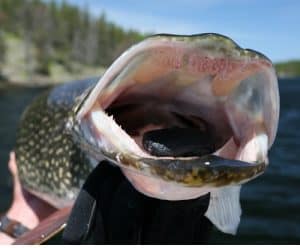
Seasoned anglers carry all types of lures in order to attract a big catch each time they go out on the water. These lures try to cover each fishing zone: surface, bottom, and subsurface. There are specific lures for each type of zone, and with certain types of bait, you’ll be able to attract the fish you want every time.
Artificial bait and lures are made to imitate the movements and characteristics of prey that fish like to eat. They have the same flash, color, and shape as prey basically.
Lures are simply fun to use and collect. You can use them over and over again to attract larger fish, and it’s extremely satisfying to catch a fish on a lure, especially one that’s a bit more expensive. However, fish are attracted to lures because they can look just like the tastiest organism with colorful designs, reflections, and jittery movements that make them more alive than the real thing.
Lures also tend to catch larger fish on average, and you’ll be able to catch fish in the jaws, mouth, and lips, which is better for catch-and-release fishing.
Since most fishes are designed to target specific types of fish, they have different weights and sizes, built to withstand undercurrents as well as high wind conditions. Not all lures are going to be able to attract fish that want to smell the bait, rather than get tricked to latch on by reflective features.
Types of Fishing Lures
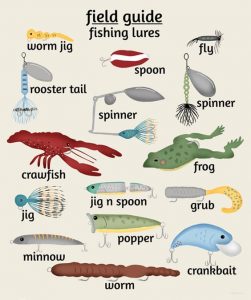
When you go out on the water every day, you should know all about the different types of baits and lures available to you. With artificial lures, there are hundreds to choose from, but they fall into specific categories.
There is a great bait debate in the fishing world right now between soft and hard bait types. Every angler wants to get that edge when they fish, so we’ve broken them down and defined the characteristics to look for based on the type of fish you want to catch and the type of water you fish in.
Here are a few to add to your collection, as well as how each work and for what fish.
Hard Bait

Anglers tend to have a fish tried and true hard baits in their collection. These last longer than soft baits, and they tend to look more like fish that larger predators feed on. In addition, hard baits can make noise and move like prey, which tends to get more strikes. Here are a few hard baits to check out for your collection:
Crankbait
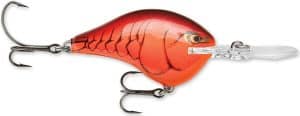
These look like small fish and typically will work best if you are fishing surface zones to medium dives, and occasionally deep-diving fish. You can cast and retrieve by reeling, then cranking the line back in.
Minnow
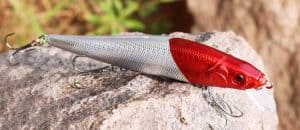
These mimic extremely small fish. Some will float, and others dive, as well as shimmy, gurgle, splash, and shake to mimic prey that fish love to feed upon. You tend to catch a lot of fish types with minnows so be careful to use them in zones where you know your catch will strike.
Pencil
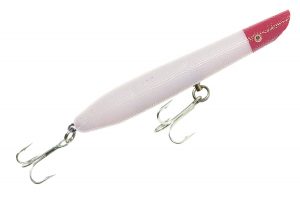
Pencil baits are also called stick baits and walking baits. These are topwater lures that you can always use to catch larger predators, such as bass. Pencil baits are pretty historic to hard bait lures, dating back to 1910. You can now break them down into horizontal and vertical. Horizontal pencil baits move side to side in the water, which is called “walking the dog” or “skating.” Vertical pencil baits went out a long time ago, so you’ll only find the traditional horizontal pencil baits in most stores.
Popper
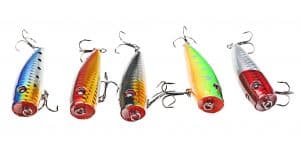
These are smaller hard baits that mimic the movement and shape of bugs floating on the surface of the water. When the bait is jerked, it makes a sound that will attract your catch. These are perfect for calm lake waters during a post-spawn season.
Spoon

Spoon lures are some of the oldest types of lures and were thought to originate around the 1840s. Simple in shape and color, these are designed to reflect and imitate crippled or injured prey in the water. When you cast, you’ll need to experiment to see what speed works best to lure fish.
Spinnerbait
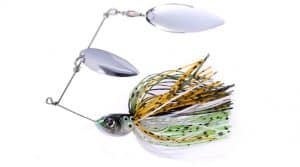
These are great for attracting fish who like movement and flash. The spinner has small blades that propel and spin, reflecting in the water to attract a predator. Fish like the motion and vibrations that shoot through the water from these types of lures.
Flies
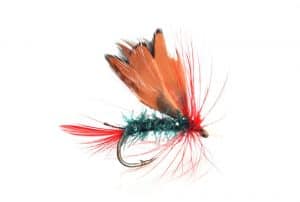
A lot of anglers have a collection of flies that are artificial lures mimicking both aquatic and terrestrial insects. These are perfect for fishing near trout streams. Fly fishing is a bit different than when you spin cast because it uses different techniques and equipment since flies are so lightweight. A typical fly lure only weighs a few grams and is created from feathers, fur, tinsel, thread, and foam. Since they are very light, you don’t cast a fly the same way as it wouldn’t be able to drop in water just like a spoon or spinner would.
Jig
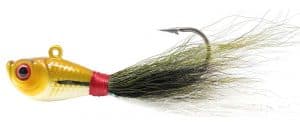
These are small hooks with a lead ball near the hook’s eye, and they can be decorated with eyes, rubber legs, tinsel, and feathers. These are typically more expensive and tend to only work on certain types of fish, such as bass or larger predators.
Soft Bait

Soft baits are more natural and work better in some ways because of their familiar texture, odor, color, and simplicity to use. They are more effective when you head out to local shops in areas near where you plan to fish as well.
Of course, the most common bait is the earthworm. It is loved by every freshwater species of predatory fish looking for a meal, but there are a lot of other baits that work, including crickets, bees, snails, small frogs, tadpoles, crayfish, ants, and grasshoppers. However, experienced anglers will tell you that fish eggs or roe are the best way to bait.
Most of these soft baits are going to work only for freshwater fishing, and you’ll typically want to be in calm waters unless using a lure, which can withstand the current of a river. In addition, a lot of these baits won’t work well in muddy or subsurface unless they are live baits.
There are a lot of benefits to using soft baits over hard baits. Soft baits cost less, they maneuver easily, and they snag less than hard bait will. Worms are also the favorite way to catch bass. Whether it’s a real worm or a manufacturer, anglers swear by a fat worm dropped in exactly the right spot to catch a great bass.
Worm
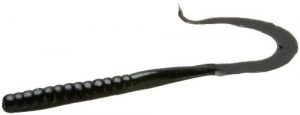
The worm bait is universally accepted as the best bait for any fish-catching needs. When in doubt, these work for all freshwater fishing needs. You can find all you need by digging up damp soil in shady areas or just heading to your local fish shop to pick up live worms.
Frog
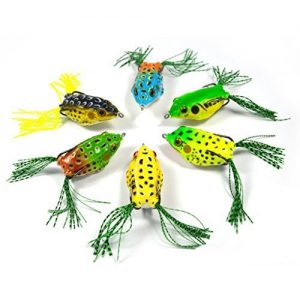
When you have a lot of covers, such as lily pads and grass mats, you may be disappointed in your bait selection unless you have a frog bait. There are a few different types of frog baits, such as topwater hollow-body frogs that typically have small bodies with long legs that hang down. They look a bit like a frog walking on water. These work well for catching bass in water with heavy brush and cover.
Other frog baits are more lifelike, such as the Roadrunner, which is a lifelike frog model that can be cast out from a distance and emits a plopping sound that calls to fish, particularly bass.
The best time to use frog baits is in the mornings and evenings when you are hunting fish in shady, brackish water.
Shad
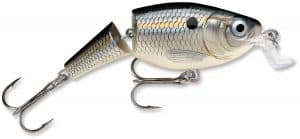
Shad is the preferred fish bait for catching catfish. These are small silvery fish that you can catch yourself or you can purchase. There is a debate on whether fresh or frozen shad is best for your fish-catching needs. Fresh shad is the best bet if you want to catch blue catfish, according to some anglers. In any case, shad is best for river fishing in shallow, brackish waters.
Crab
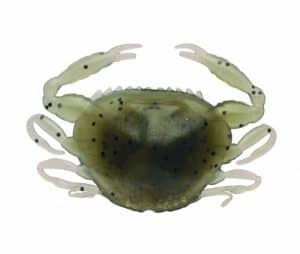
There are all types of crabs and different ways that anglers use crabs in certain waters to catch the right predators. Around inshore areas, such as bridges and fast-moving currents, anglers like to use blue crabs. You’ll typically use a float that is a few feet from the crab to keep the bait just where you want–in the strike zone.
However, pass crab is good for catching fish like tarpon and some larger predators when you are fishing off the shore. These are easy to cast, but they are typically not as successful as blue crabs.
The Secrets to Catching More Fish with Your Baits
There are some things that are inevitable with any lure or bait. You might not catch anything on days when the water is simply too murky, and the time of day is just not right. However, even in terrible conditions, there are some tricks that can help you get more strikes.
When in Doubt, Add Flash
Most anglers have a collection of Senko or stick baits, as well as small swimbaits, and a variety of plastic fishing lures. Fish see these baits all the time and don’t pay any attention to them. If you want to make your bait stand out and get strikes, then you should add a blade to your bait.
You may want to shop around for lock blades that will move right into the end of a Senko or other artificial lure. Most blades use willow leaf, but there are multiple options to add flash to your line.
You can add a small blade to the underside of any bait and then cast it out. You will be surprised how many bites you get with this simple technique.
Do Hear What I Hear? Fish Do!
Noise is a great addition to any bait, especially when you want to catch aggressive predators. Fish sense prey through sight, smell, vibration, taste, and sound, so adding noise is just a good way to unlock another sense.
When you combine more than one of these senses, there are more chances that a fish will strike. If you are in an area with a lot of cover and vegetation, noise is the key to making a bad day fishing trip turnaround.
Topwater Trebles
If you are fishing in topwater, you may want to have a treble around just so you can add it to your baits. It may seem small and unimportant, but it’s quite the opposite. You can add a treble feathered bait to a popper or spoon bait, just for that added flair and flash to get a fish’s attention. This is a perfect opportunity for catching bass.
Use Different Hooks for Casting and Pitching
While you may think that it’s easier to cast into shallow cover, then head down to the bank, and then cast to a brush pile with the same setup, it’s not going to work and it will waste your time, according to professional anglers.
You should use a straight shank hook when you cast with a worm because it will look better to fish in the water. You don’t want the fish to see the hook at all, and over time, fish have gotten used to the color and smell of a hook. However, when pitching to flip a worm to cover, anglers say you should avoid a heavy-duty flipping hook. Smaller hooks are always better to go when you are fishing with worms.
Plastic Worms vs Live Worms
There is a situation in which one worm is better than the other. Just because a worm is wiggling doesn’t mean that a fish will be attracted to it. Taste, smell, sound, and color are all important to certain types of fish in the right water.
- Straight-tail worms: These are the most versatile and will work for most fish. They also move and sink differently, allowing you to fish in strong cover or even in clear water without a problem.
- Curly tail worms: If you are working with a lot of vegetation and brackish water, then the curly tail worm is best since it has more realistic movement in the water.
Live worms always tend to work best with a small hook in clear-water areas as well as muddy waters due to the smell and movement.
Pick the Right Weight and Size

The fall rate is very important. You want your bait to fall to the bottom in a way that is realistic and likely to catch a predator that is smart, as well as big. With worms, you want to choose the weight size that is going to work with the depth of water that you are fishing in. For bass fishing, it’s absolutely essential to get the fall rate correctly so that your worm looks like a real worm and not a cheap imitation.
Conclusion
Learning to fish with lures and baits is trial and error at first. You may not be able to accurately get the right baits the first time, but following professionals and learning about the different lures specifically made for the fish in your area is a good first step. Bass fishing is the most popular sport among anglers, and it’s what most fishermen aspire to catch at first.
Just remember, when bass fishing, using worms is probably the best approach as these fish are typically smarter than your average predator. Plastic worms work effectively throughout the year, but it’s really about your technique and lure action that will get you more strikes.


